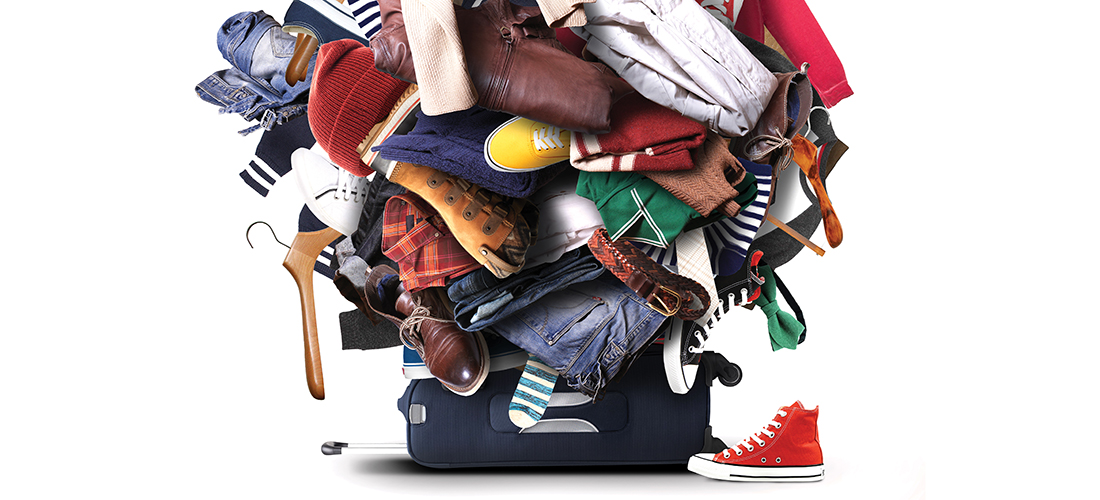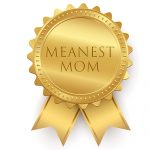
Spring cleaning and decluttering in the Sandhills
By Jan Leitschuh
You never get enough ’cause there’s just too much stuff
— Too Much Stuff, by Delbert McClinton
In my Wisconsin childhood, the first soft days of spring led to a vigorous and enthusiastic assault on accumulated winter crud by the women on my block. After being cooped up for months with the kids, they felt the craving for space, serenity and order. Children were shooed outside — no playdates needed, just a sweatshirt and orders like “Go play with your little brother, and not in the road.” Boom: The closet cleaning, organizing and disposal of the long winter’s detritus commenced.
“I think the urge comes from prepping for spring, especially those gray, rainy weekends just before. It’s been a long winter, and we’re feeling stuck; we want to purge,” says Mandy Mosier of Clean Quarters by Mandy, an in-home decluttering service charging $40 per hour. “Or I could be cliché and say ‘new beginnings.’”
These days, busy moms work outside the home, and stuff accumulates despite the increasing involvement of the male of the species. But stuff has weight, and they want to lift that weight off their household. But we’re busy . . . and there’s that inertia thing . . . and, so much stuff.
It’ll wear you down, carrying around too much stuff
Today, decluttering the homes of the busy and overwhelmed is big business, the purview of coaches, specialists and TV series, such as organizational guru Marie Kondo’s best-selling books and recent hit Netflix program Tidying Up with Marie Kondo.
Another popular online resource is home organization website FlyLady.net. “Have you been living in CHAOS? FlyLady is here to help you get your home organized! She teaches you to eliminate your clutter and establish simple routines for getting your home clean!”

FlyLady has you begin with a clean sink and expand from there, sending daily emails assigning small 15-minute tasks. FlyLady’s key values are self-love, patience and many small actions. It urges folks not to be perfectionists, noting that your home didn’t get cluttered overnight, so just drop the mental chatter, be patient with yourself and git ’er done. If your after photos look worse than others’ before photos, no self-flagellation. Note the change and keep moving forward.
All this outside support speaks to a deep longing in our busy souls for space, peace and household order.
So. What’s holding us back from serenity and home nirvana?
Too much stuff, there’s just too much stuff
“Our culture is to accumulate, gather things,” observes Mosier, wife of an active duty military man and veteran of 14 moves in the last 18 years. “Then we are working full time, so we don’t make time to throw things away after doing the cooking, laundry, shopping, dealing with the kids, trying to relax. There’s no time, it seems. It’s so much easier to shove something in a box in a corner or the attic.”
“Moving as often as I do, it is in the forefront of my mind, knowing I’ll have to pack things up again. So this has forced me into a constant state of purging. I’ve learned to live a minimalist lifestyle,” she adds.
Some spring-cleaners need a non-judgmental, outside eye to give them direction and help them stay focused. For others, simply watching a reality show about decluttering is the spark to clean things up and restore peace to the home. Local thrift stores report donations are up in the wake of the Kondo series. “Absolutely,” agrees Lucie Saylor, manager of the Emmanuel Episcopal Thrift Shop in Southern Pines. “I have been asking everyone who brings things in, ‘What’s going on here?’ I think a lot of it has to do with the weather. I’m sure the Coalition (Sandhills/Moore Coalition for Human Care), Friend to Friend, Whispering Pines (Thrift Shop), all of us are benefiting.”
Marie Kondo’s method is full-bore. It begins by connecting with the house, and then simply piling all the clothes on a bed and looking for items to discard, thanking them first for their role in your life. Discard what no longer “sparks joy.” This can be problematic — do athletic supporters or Spanx or underwire support bras “spark joy” in you? (No denying they can be useful in certain situations.) After the winnowing, Kondo shows clients how to roll clothes and stand them upright in drawers, so all can be seen at a glance. Then she moves on to books, papers, sentimental items and everything else — kitchen, garage and the rest.
You can pile it high . . . But you’ll never be satisfied
Perhaps the real secret to Kondo’s decluttering success isn’t the simple sparking of joy but the massive disruption caused by disgorging all that stuff from its static place at the bottom of the closet or back of the drawer. Once it’s out, it must be dealt with. Besides making a visual impact — “Oh my! I have so much stuff!” — the shelves are now clear to wipe down, the floors easily vacuumed. Who wants to put all that back anyway? Plus, you’ve now found that beloved concert tee you thought you’d lost, and who needs to buy toothpaste when two full tubes still in their boxes surface?
“I love Marie Kondo,” says Mosier, “and I did the ‘spark joy’ thing, but I think it can have some limitations. Say, when you’re sorting your sock drawer.”
Persistence is the key. “It looks worse before it gets better” is a Kondo mantra. “You have to grab the mood when it strikes,” says Mosier. And carry on.
The Kondo “mountain of stuff” method may not work for everyone. “A lot of our psychological block is that it’s already overwhelming, especially if you have children,” says Mosier. “I’ll break it down into categories for them. We’ll do all the dresses. Then all the T-shirts. When I leave, I might say, ‘Tonight I’ll have you do your sock and underwear drawer.’”
It’ll mess you up, fooling with too much stuff
While some sort by sparks of joy, others use the tried and true one-year rule.
Kelly Sanders of Kelly’s Tidying and Organization, who also helps others organize, clean and declutter at $35 per hour, agrees with Kondo that “I personally find it easier to make a complete mess first and bring everything out, then start sorting.”
Sanders, mother of two, is so disciplined and organized in her home life that she doesn’t have much in her closets to clean out. “I buy only the bed linen I need, then wash it and put it right back on the bed, so I keep the closet from overcrowding,” she says. “And as far as my own closet goes, most of my items are wash-and-wear quality in dresser drawers. So my closet is minimal.”
But she is firm about discarding, sparks or no sparks. “If I haven’t used it in a year, it needs to go.”
Well it’s way too much . . . You’re never gonna get enough
Mosier, as the wife of an active duty military man, is also tough on herself, but her approach to clients depends on their core values. “I don’t have a specific one-size-fits-all method because what motivates one person doesn’t motivate another. I try to connect to the main reason they contacted me in the first place.” She has new clients fill out a questionnaire detailing their goals, priorities and their “why.” It becomes her roadmap in dealing with specific client needs.
One of Kondo’s principles is item visibility, and Sanders agrees. For her own home, where she is the strictest, Sanders stays organized by “constantly checking on things and seeing how out of hand an area or closet has gotten. The old saying ‘out of sight, out of mind’ is so true. If you can’t see it . . . it’s likely to become hidden with clutter.”
Her home’s kitchen is an example. “I have open shelving storage so I see exactly where things go or need returning. Same goes for my closets. Everything is in sight. My son’s closet is by size and color so I know exactly what I’m looking for. I try to go crazy, clearing out seasonally.” As each one of the four seasons ends, she says, “I go through everything from that season as I’m putting it away in storage containers . . . clear ones with labels so I know what’s inside. I donate holiday decor items I’ll no longer use or sell my kids’ clothes that they’ve outgrown, to buy the new ones they need. I try to stay on top of clothes.”
Ah, baby clothes. “A major question I ask in a first meeting: ‘Are you planning to have more children?’” says Mosier. “Women who are done having children can get rid of all this baby stuff.”
It’ll hang you up, dealing with too much stuff
Sentimental attachment is one factor both Sandhills organizers find trips people up. People often identify strongly with items imbued with memories.
“Everyone is different,” says Sanders, “but basically I talk to them about being overwhelmed in stuff, and wanting to breathe. That it’s OK to let go of some things and only keep the most meaningful, something that meant something to you personally.”
Our attachments can have deep psychological roots. “I think the biggest thing behind clutter is being attached to items,” says Sanders. “There’s guilt of letting it go because maybe someone special gave it to you, and you don’t want to disappoint them. Or, you believe it has sentimental value?”
The “might-need-it-someday” mentality is also a clutter keeper. “I know several people who came up very poor and believed in keeping things until they broke or could pass them down,” says Sanders. “They now are able to buy things, but are mentally unable to let things go.”
“My kids might want this one day” is another hang-up, but many find their offspring are rarely interested in grandma’s china or the great-aunt’s crystal. Use or donate, the experts advise.
It’s a mental game. Mosier tries to connect with her clients’ “why.” “One lady is very attached to her things,” says Mosier. “She has dresses with tags still on them. Some are old and stained and torn but she was pregnant when she wore them. As a stay-at-home mom, she wears dresses maybe once a week to church. She went through them and had a hard time letting go. And the clutter in the house was damaging their marriage.”
Yeah, it’ll tear you down, fooling with all that stuff
Mosier’s tips for sorting clothing include asking: Is it classic or trendy? Does it still look new or fresh? Is it stained, damaged or torn? “Women are very appearance driven, and clothes are important to us, and we get attached to those things in a way I don’t think men do,” she says.
Harking back to her questionnaire of stated goals, Mosier was able to ask her client, “Is this dress that you have never worn more important than your marriage?” She may practice a little tough love. “Sometimes I have to take a gruff approach with people. ‘You’re going to go through these dresses again.’ And then I sit there as they try them on. An outsider’s eye has no sentiment. Often, I’ll be able to offer some clarity and say, ‘Honey, you’re a beautiful girl and that doesn’t flatter you,’ or, ‘That dress doesn’t do you any favors.’”
One client had trouble letting go of a large stainless steel silverware chest because it was a wedding gift, even though she had a set she preferred. The solution? Art. “We took one setting only — knife, fork and spoon — and had them framed in a shadow box with a meaningful saying about love and nourishment, and she liked that,” says Mosier. “There are companies that will take your baby clothes, or your college tees, and turn them into blankets.”
For bulky sentimental items, the organizers suggest up-cycling. Mosier turned her wedding dress into a baby quilt. “Now I have one baby blanket that my kids use, not 10, and it is meaningful.” Her husband’s old military uniforms were important to him, but taking up space, unused: “My mother-in-law took them and made two lap blankets for our two boys.”
You know you can hurt yourself, fooling with too much stuff
The massive disgorging of clothes frees up a lot of energy, say all the organizers. This is the payoff — space, peace, satisfaction, the big sigh of relief. “Start by focusing on the most cluttered rooms first,” advises Sanders. “After those are completed, the rest of the house will seem like a breeze and will be something you’ll want to do. Place seldom-used items in clear containers for easy storage and you’ll know how to locate them.”
Mosier finds “the master closet seems to be the number one priority, followed by the kitchen, followed by the kids’ playroom. Most of us find it easier to get rid of our kids’ stuff, than our own.”
Then there is the “where-to-discard-it” paralysis. A number of folks don’t want to consign the still-useful to landfills. “Some of it just has to go right in the dumpster,” says Mosier. “Then I like to suggest the Sandhills Coalition or Friend-to-Friend for useable items. People like the idea of helping others. Since I mostly work with women, I use Friend to Friend, the battered women’s advocacy agency, to help women let go. I point out that if this dress can help one woman in need get out and get a job to support her children, that’s an easy sell.” Mosier also likes the website RealReal.com for recycling upscale items on consignment.
You know you can’t get a grip when you’re slippin’ in all that stuff
For Mosier and Sanders, decluttering is a year-round activity they enjoy. “But I see why people might feel overwhelmed,” says Mosier. “I am naturally prone to this because of the way my parents raised me, and our constant military moves. I became a stay-at-home mom when we decided to have children, and that allows me to have the time to do something I enjoy doing.”
She laughs: “If I was working full time, my house would probably be a mess!” PS
Contact Sanders through email: Sanderskelly2820@yahoo.com or at 910-705-5016. Contact Mosier either on her “Clean Quarters by Mandy” Facebook page, or by email: cleanquartersbymandy@gmail.com.





